Revenue cycle staffing challenges persist: Hospitals turn to automation, outsourcing
Revenue cycle staffing challenges have not abated since the end of the pandemic. In response, hospitals and health systems are seeking both short-term and long-term solutions to ongoing staff shortages. Many are increasingly turning to automation technologies and outsourcing to reduce overall costs and drive operational efficiencies.
Consider findings from a recent report stating, “The healthcare industry is rapidly moving towards digitalization, creating demand for advanced revenue cycle management (RCM) solutions. The increasing number of data silos and unorganized workflows in healthcare settings is leading to rapid market development and growth.” [1]
The report also noted that growth in the U.S. is expected to be significant, reaching a compound annual growth rate (CAGR) of 10.3% from 2024 to 2030.
In an HFMA Executive Roundtable discussion, sponsored by Omega Healthcare, panelists discussed ready-to-implement solutions for today’s top revenue cycle challenges, which they said can help prevent delays in care and payment, thereby improving outcomes for both patients and providers.
Moderating the roundtable titled “Beyond staffing shortages: revenue cycle solutions that work” was Christine Aucreman, vice president, enterprise performance management and support services, Trinity Health.
What are the experiences of your organization with recruiting and retaining staff?
Anurag Mehta: I started Omega Healthcare almost 21 years ago. When we first started, we had our own challenges with staffing common to the revenue cycle business but have now successfully grown to 35,000 employees supporting the U.S. healthcare industry. The majority of work we do is on the provider side, providing revenue cycle solutions. We’re the world’s largest medical coding company, with more than 7,000 coders on staff.
Shannon Hartke: We are a four-hospital health system with a robust medical group operating at more than 30 clinics throughout our service area. We recently added our fourth hospital into the Southern Illinois Hospital Services [SIH] family. We serve the southernmost 17 counties in the state of Illinois, with 670 medical staff, representing more than 60 specialties and sub-specialties.
Ellie Su’eSu’e: We are a tribal health organization with a critical access hospital in rural Alaska. We deal with a number of challenges, not only staffing, but also patient access. So we opened up an office in Alaska’s largest city, Anchorage. We have 31 offices there now. Finances and revenue cycle are both almost fully staffed.
Daniel Pencak: We have 20 occupational health clinics, primarily in Southern California. I oversee accounting and finance in the revenue cycle functions.
Angela Shelton: We have one small hospital in addition to several clinics and a couple of surgery centers. We are in Alabama, Georgia, Tennessee and Florida, and we continue to grow, but staffing is a challenge.
How are you addressing staffing shortages within your organizations, particularly in clinical and staffing functions?
Robert Boos: We’re in Lynchburg, Virginia. We have five hospitals and a physician group of 700. We have a 92% market share, so recruiting and retention is a whole different ballgame for us. We don’t have competitors nipping at our heels. I have the pleasure to oversee 504 dedicated employees from front-end registration, RCM, revenue cycle, denials and billing follow up.
Matt Thomas: About three years ago we started aggressively targeting universities, colleges and technical schools within a 45-mile radius. We have been able to attract dozens of students who are in school and get them excited about healthcare. We bring them in to work the front lines in roles such as medical assistant, receptionist or positions in revenue cycle.
We have selected probably 50 students over the last several years. The number of students we attract gets larger each year. We are able to retain 10-12 students as per diem employees each year to strengthen our staff bench. We keep them working throughout the year on such competencies as revenue cycle and prior authorizations.
What are your plans for recruitment, talent development and career growth strategies?
Sharon Kelley: From a recruitment strategy perspective, we need to develop competency-based hiring protocols, emphasizing a deep understanding of healthcare and soft skills such as communication, customer service and problem solving. We need to partner further with educational institutions and ensure we are offering competitive compensation and benefits. Once talent is recruited or developed internally, we need to make a commitment to continuous education and certification programs, cross training and role rotation, technology training and leadership development. Finally, we need to make a commitment to defined career paths, mentorship programs and consideration of a flexible work environment to retain our staff all while ensuring we maintain our commitment to diversity and inclusion.
Thomas: Company policies are much different for administrative tasks such as revenue cycle than they are for many other roles. There is demand by many employees within revenue cycle that want to work remotely. We can accommodate that in areas such as accounting, finance or revenue cycle, but front-line workers in our ambulatory practices who are patient-facing do not have that accommodation yet.
Hartke: We are focusing on retention: Building a culture of trust and psychological safety, while having crucial conversations. This was particularly important as we integrated our newest hospital. The staff had much to learn as they transitioned to a new culture and [EHR]. Our revenue cycle leadership teams also joined forces — each offering valuable insight. The message was basically very simple: build trust, transparency and assurance; stating often, “I need you more than ever.”
Are you currently outsourcing any functions or considering doing so in the next 12-18 months, and if so, which ones?
Hartke: We recently chose to outsource our customer service phones, due to a lack of resources in our recruiting area. It was really a culture change for us. We monitored our community feedback very closely and ensured our key performance indicators were consistently achieved. Through this collaboration we achieved a lower abandonment rate, shorter hold times and expanded service hours.
Boos: We have a significant number of positions in revenue cycle that we struggle to fill. We are missing opportunities because we can’t fill these positions. We saw that by utilizing offshore labor there are months where we can secure, onboard and train a large number of staff quickly. You could not find that many new people per month here in revenue cycle management. But with outsourcing, and especially the offshore model, you have to navigate a lot of negative publicity around the practice. There are also increased security concerns. You need to have rock-solid security.
Jon Neikirk: We’re currently outsourcing self-pay collections and some insurance follow-up work. Outsourcing should be based on value. Organizations with limited resources should consider using internal talent for high-value work and outsource lower-value work. We’re currently evaluating machine learning models that will help us better identify low-value accounts.
How are you managing patient access to the physician enterprise within your organization?
Mehta: Let me give you an example of patient access with one of our customers. One of the largest hospital systems in the northeast came to us with the problem that their physicians were getting burned out responding to too many patient messages. And they wanted to help their patients and improve their experience with a quicker response. So they decided to move to a model of triaging those messages.
We have nurses in the Philippines that are responding to inbox messages. We did a full review of [the messages]: 4% got pushed back to the clinic, 96% of them got responded to. With nurses doing this work, physicians were able to see 2.2 more patients per day. That meant an increase in top-line revenue and less physician burnout.
What are your top three revenue cycle challenges and how are you addressing them?
Sheldon Pink: Keeping our talent; how to focus more on employee retention versus just getting qualified employees. I believe that [there are] qualified employees out there, especially in the changing business model. As we’re changing, we’re educating. But how do you keep them and keep them competitive? Especially considering that when you get people certified or provide them with new skills or expertise, suddenly they’re more marketable.
Shelton: Top challenges include authorization denials, timelines of both filing and follow-up on claims and workflow efficiencies. Many systems were set up in the past and don’t always serve us well in our current environment. Certain payers just deny a percentage of claims because they know analysts can’t get them all appealed in time. So being able to queue the claims in a manner that is efficient, using available staff and knowing they’re working correctly can be a problem.
Hartke: Our largest and most complicated challenges within the revenue cycle are the administrative burdens and increased regulatory provisions we are required to implement. Many of these requirements increase our labor expenses, confuse patients due to redundancies or hamper access to care — none of which provides true patient value.
Boos: I say this with the utmost respect for the challenges we face, but it’s important to recognize that payers are not always aligned with our financial interests. Their business model often involves minimizing claim payouts, and some for-profit organizations actively seek ways to reduce reimbursement and deny claims. They take notice when a health system does not rigorously defend its revenue streams, challenge underpayments or appeal denials. If we don’t proactively push back, we risk increased scrutiny, ongoing denials and prolonged reviews. It’s critical that we remain vigilant, advocate for the reimbursement we rightfully deserve and stand firm in protecting our financial stability.
What investments has your organization made in any technology-enabled solutions to alleviate staffing burdens or to automate processes? Are you doubling down on your EHR? Are you creating solutions internally? Are you partnering with organizations that can support you?
Mehta: We are very much technology-driven. It is part of our DNA. We have 400 people in our organization that do nothing but build tools to make things more efficient. We don’t sell any of these tools; we’re just enabling our services from a technology perspective. But to give you an example, last year we were able to leverage technology solutions that represented nearly 2,000 digital workers. There are really good tools available, from bots and automation and AI. And they get better. They get smarter, especially as you put more data through them.
Kelley: We are doubling down on utilizing the Epic platform to streamline and enhance our revenue cycle operations, with a strong focus on introducing automation in the billing and accounts receivable processes through bot technology. This approach will significantly reduce manual tasks such as claim submission, payment postings and follow-up on outstanding claims, improving efficiency and decreasing errors. In parallel, we are migrating toward autonomous coding for key physician specialties, which will ease the burden on our coding staff and will reduce our dependency on contract coders. By leveraging these technologies, we aim to optimize revenue cycle performance, reduce denials and enhance overall financial outcomes.
Pink: We are exploring options with many different technology companies. That’s the challenge. Therefore, we look at doubling down on Epic to understand our true needs. If you optimize Epic to the fullest, you can identify which system is best for your organization. It will be more beneficial to you and will not duplicate efforts that already exist in your EHR.
Neikirk: We recently merged with a health system in eastern Wisconsin so we’re now in the midst of integrating our revenue cycle functions. Technology is a big part of what we’re looking forward to leveraging. Given our limited IT resources, we’re really focusing on what can we automate in Epic. Examples include real-time eligibility, enhanced claim status and simple visit coding.
Once we automate as much as possible in Epic, there will still be some gaps in capabilities. That’s where outside partners come into play. Automation won’t entirely solve our staffing challenges, but it will be a big part of our model going forward.
Conclusion
Roundtable participants said they are wrestling with increased administrative burdens, compliance regulations and claim denials, which adds to the work strain on already squeezed revenue cycle teams.
According to participants, outsourcing has been an attractive option for some hospitals to manage the workload. Other participants are relying on offering remote working arrangements to increase job satisfaction and retention rates and another is working with students from local universities, colleges and technical schools to fill a variety of positions, including medical assistant, receptionist and positions in the revenue cycle.
Most providers said they are increasing their investments in technology solutions. They are seeking ways to streamline revenue cycle operations and introduce automation into billing and receivables processes. The hope is that advanced technologies will enable many of them to reduce their manual tasks, improve efficiency and increase profitability.
Panelists
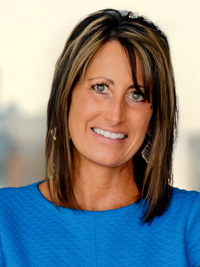
CHRISTINE AUCREMAN
FHFMA, CHFP, CPA, is vice president, enterprise performance management and support services with Trinity Health in Livonia, Mich.
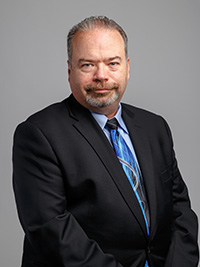
ROBERT BOOS
is vice president, revenue cycle at Centra Health in Lynchburg, Va.
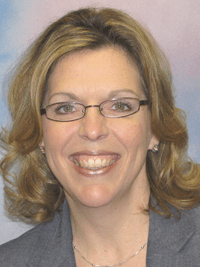
SHANNON HARTKE
FHFMA, MBA, FACHE, is corporate director of patient financial services and revenue cycle with Southern Illinois Hospital Services in Carbondale, Ill.

SHARON KELLEY
MBA, CPA, is chair, revenue cycle with Mayo Clinic in Rochester, Minn.

ANURAG MEHTA
is CEO and co-founder of Omega Healthcare in Boca Raton, Fla.

JON NEIKIRK
is executive director, revenue cycle with Froedtert Health in Milwaukee, Wis.
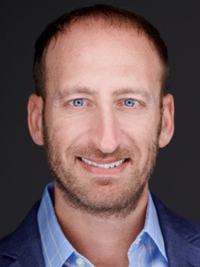
DANIEL PENCAK
is CFO with Akeso Occupational Health in Irvine, Calif.
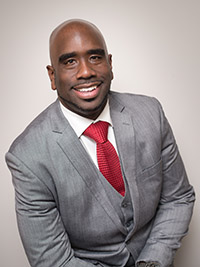
SHELDON PINK
FHFMA, MBA, LSSBB, is vice president, central business office, with Methodist Health in Dallas.
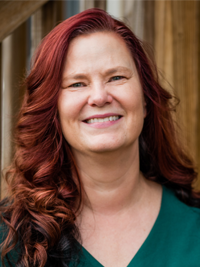
ANGELA SHELTON
FHFMA, MBA, CMA, is chief revenue cycle officer with Hughston Clinic in Columbus, Ga.
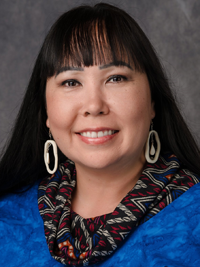
ELEANOR (ELLIE) SU’ESU’E
is associate financial officer with Bristol Bay Area Health Corp in Dillingham, Alaska.
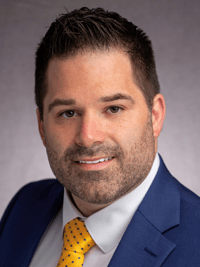
MATT THOMAS
MHA, FACHE, is director, practice management with Emerson Health in Concord, Mass.
About Omega Healthcare
Founded in 2003, Omega Healthcare Management Services® (Omega Healthcare) empowers healthcare to thrive via intelligent solutions that optimize revenue cycle operations, administrative workflows, care coordination, and clinical research on a global scale. The company works with providers, payers, life science companies, medical device manufacturers, health technology firms, researchers, and industry partners to amplify teams with robust technology, specialty expertise, and operational support. Omega Healthcare serves 350+ healthcare organizations with 35,000 skilled workers in the United States, India, Colombia, and the Philippines. For more information, visit www.omegahms.com.
This published piece is provided solely for informational purposes. HFMA does not endorse the published material or warrant or guarantee its accuracy. The statements and opinions by participants are those of the participants and not those of HFMA. References to commercial manufacturers, vendors, products, or services that may appear do not constitute endorsements by HFMA.
Footnotes
[1] “Revenue cycle management market size, share & trends analysis report,” Grand View Research, 2024.






